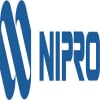Dive Brief:
- Third quarter results from AstraZeneca, Clovis Oncology and Tesaro suggest that while PARP inhibitors are making some strides on the market, the drug class has yet to become the commercial success Wall Street thought it would be not too long ago.
- Each of the companies' PARP products experienced year-over-year growth in the double digits, though AstraZeneca's Lynparza was far and away the highest earner. Sales of the drug totaled $169 million for the three-month period, while Tesaro's Zejula and Clovis' Rubraca clocked in at $63 million and nearly $23 million, respectively.
- Lynparza sales were roughly in-line with expectations, according to analysts, whereas Zejula outperformed and Rubraca underperformed. On Clovis' earnings call, CEO Patrick Mahaffy explained that PARP inhibitors have had trouble breaking further into the second-line maintenance setting for ovarian cancer — a key indication for all three approved PARP inhibitors.
Dive Insight:
Pharmas are banking big on PARP inhibitors. Just last year, Merck & Co. and AstraZeneca inked a deal worth up to $8.5 billion mainly focused on testing Lynparza (olaparib) with immuno-oncology drugs Keytruda (pembrolizumab) and Imfinzi (durvalumab).
Yet revenue from the drug class to date has largely been underwhelming. After almost four years on the market, Lynparza is still well short of blockbuster status. Sales of Zejula (niraparib) and Rubraca (rucaparib), both approved more recently, trail much further behind.

Part of the gradual build has to due with physician adoption.
The three PARP inhibitors are all now approved as maintenance therapy for ovarian cancer patients who had at least a partial response to chemotherapy. But penetration into that market has been essentially flat after initial inroads, according to both Clovis' Mahaffy and Tesaro CEO Lonnie Moulder.
Mahaffey said market share sits at about 35% to 40%. That's been particularly problematic for Rubraca, which came second to market after Lynparza but hasn't achieved the amount of returns as either of its immediate competitors. The Clovis drug missed Leerink's estimates by 25% for the third quarter, spurring the investment bank to lower its price target for the biotech.
"While we believe some investors may find the valuation compelling at these levels, we remain on the sidelines, given the persistent PARP inhibitor commercial challenges, lack of near-term transformative catalysts, and diminished prospects for strategic optionality," wrote Leerink analyst Andrew Berens in an Oct. 31 note following Clovis' third quarter earnings presentation.
Clovis executives are trying to remedy the situation. Mahaffy highlighted how his company recently rolled out new promotional materials for prescribers, expanded its nurse education group and grew its regional account team to "educate key accounts about the significant gap in patient care and establishing the importance of second-line maintenance therapy."
The company has also been high on Phase 2 data showing Rubraca offered a significant benefit in another indication: HRR-deficient metastatic castration-refractory prostate cancer patients.
It's not the only one with fresh data, however. AstraZeneca last month released "home-run" data from a Phase 3 study assessing Lynparza as a first-line maintenance therapy for certain ovarian cancer patients, and Tesaro plans to present its own data for Zejula in the first-line ovarian cancer setting regardless of BRCA mutation by year's end 2019.
Correction: A previous version of this article misidentified when Tesaro plans to present the Zejula first-line data.















